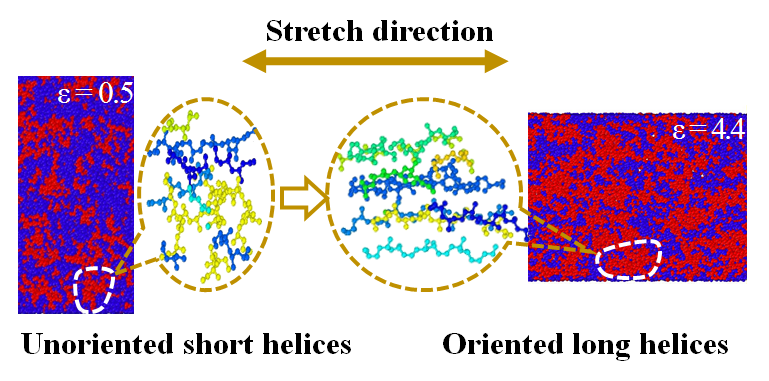Stretch-Induced Coil-Helix Transition in Isotactic Polypropylene: A Molecular Dynamics Simulation
Pro. Liangbin Li and master Chun Xie of our laboratory studied stretch-induced coil-helix transition in iPP by molecular dynamics simulation. And related researches was published on Macromolecules (10.1021/acs.macromol.8b00325).
Stretch-induced coil-helix transition (CHT) of isotactic polypropylene (iPP) was studied with full-atom molecular dynamic (MD) simulations during uniaxial stretch process. The results show that imposing stretch induces CHT, which increases both the content and the average length of helices. As strain exceeding a certain value, long helices initially not presented in melt start to emerge, which mainly follow a kinetic pathway of merging adjacent short helices, while overstretch at large strain leads to helix-extended coil transition. Based on statistics on the distribution of helical length and theoretical calculation, stretch is found to reduce free energy gap for CHT. At small strain, single-chain model is sufficient to account stretch-induced CHT for the formation of short helices, but the gap reduction is mainly contributed by intra-chain energy rather than entropy, which is different from current theories for stretch-induced CHT. Whilst the formation of long helices at large strain requires inter-chain cooperative interactions, which is accompanied with the formation of helix-rich clusters. Additionally, we found that the content of helices with odd atoms in backbone is higher than their even counterparts, which exhibits an odd-even effect due to their corresponding helical lengths.
This work is supported by the National Natural Science Foundation of China (51633009, and 21704096) and the Key research and development tasks of MOST (2016YFB0302501).



